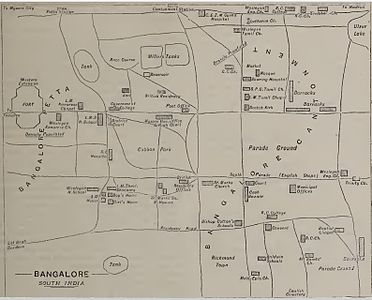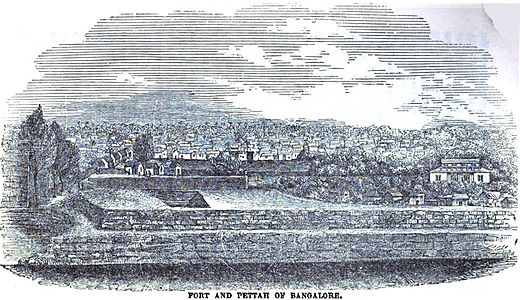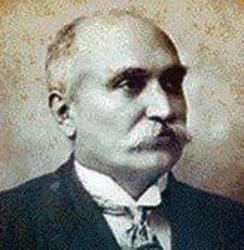
Benjamin Lewis Rice, popularly known as B. L. Rice, was a British historian, archaeologist and educationist. He is known for his pioneering work in deciphering inscriptions, especially in Kannada, and in Sanskrit inscriptions in the Kingdom of Mysore and is eulogized as Shasanapitamaha or Purathathva Pitamaha Rice's researches were published as the voluminous Epigraphia Carnatica which contains translations of about 9000 inscriptions he found in the Old Mysore area. Rice also compiled the much acclaimed Mysore Gazetteer which still remains the primary source of information for most places in Mysore and neighbouring Coorg. Rice served with distinction in the Mysore civil service and as first Director of the Mysore State Archaeology Department.

Lieutenant-General Sir Mark Cubbon KCB was a British army officer with the East India Company who was the Chief Commissioner of Mysore 1834 to 1861. During his tenure, he established a law and order system, introduced judicial and economic reforms and through action in all spheres of governance helped develop the economy of Mysore. He resigned from his office in 1860 due to ill-health and left for England for the first time since his arrival in India as a cadet in 1800. The administration of the Kingdom of Mysore under his leadership ensured that the 1857 rebellion had almost no impact in the region. He died in 1861 on board ship at Suez. Cubbon Road and Cubbon Park in Bangalore are named after him.

Bangalore Fort began in 1537 as a mud fort. The builder was Kempe Gowda I, a vassal of the Vijaynagar Empire and the founder of Bangalore. King Hyder Ali in 1761 replaced the mud fort with a stone fort and it was further improved by his son King Tipu Sultan in the late 18th century. It was damaged during an Anglo-Mysore war in 1791. It still remains a good example of 18th-century military fortification. The army of the British East India Company, led by Lord Cornwallis on 21 March 1791 captured the fort in the siege of Bangalore during the Third Mysore War (1790–1792). At the time the fort was a stronghold for King Tipu Sultan. Today, the fort's Delhi gate, on Krishnarajendra Road, and two bastions are the primary remains of the fort. A marble plaque commemorates the spot where the British breached fort's wall, leading to its capture. The old fort area also includes King Tipu Sultan's Summer Palace, and his armoury. The fort has provided the setting for the treasure hunt in the book Riddle of the Seventh Stone.

Bengaluru Pete is the area of Bangalore city which was established by Kempegowda I in 1537 with roads laid out in the cardinal directions, and entrance gates at the end of each road. Kempegowda also termed the Pete he built as his "gandu bhoomi" or "Land of Heroes". Pete forms a well–defined body of markets which were associated with various trades and professions of the populace in the locality markets and given the names of trades pursued in such markets. The well known markets are the Tharagupete–market for grains, the Balepete – for Bangles and musical instruments, the Chikkapete and the Nagarthpete for textile trade, the Ballapurpete and the Ganigarapete market where oil is extracted by people of the Ganiga community, the Tigalarapete–flower market of gardeners, the Cubbonpete – textile manufacture by people of the Devanga community.
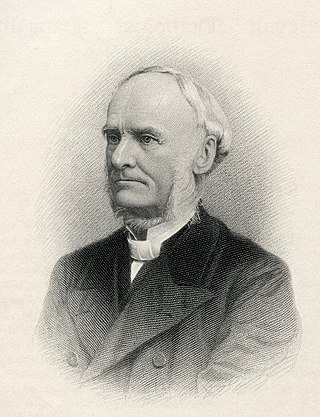
William Arthur was an Irish Wesleyan Methodist minister and author.
William Reeve (1794-1850) was a London Missionary Society missionary to India, author of an early dictionary of the Kannada language, and translator with John Hands of the Bible into Kannada. The dictionary was compiled from 1827 to 1834, when he was in Bangalore. His connection with the Society ceased 23 November 1835.

John Hands was a missionary of the London Missionary Society in India and, with William Reeve, translator of one of the first Bible translations into Kannada (1820). Hands founded the mission station in Bellary in 1810, after having failed to establish a base at Seringapatam.

Avenue Road is a busy shopping and commercial street in Bangalore, the state capital of Karnataka, India. It is located in Chickpet and runs through the heart of the city. It also connects the Mysore Road and K G Road in the city. It is in close proximity to Majestic bus station and Bangalore City Railway station.

Fred Goodwill (1874–1969) was a British missionary stationed in Bangalore, British India, between 1899 and 1924, serving as the superintendent of the Wesleyan Tamil Mission, Bangalore, and Kolar Gold Fields. He is acknowledged for working for the cause of education of native women in the Bangalore Cantonment. The Goodwills Girls School located in Fraser Town, Bangalore Cantonment is named after him. He was a scholar of the Tamil Language, and was also fluent in Canarese (Kannada) and Telagu (Telugu). Fred is acknowledged as an authority on Tamil Shaiva Literature, with authors quoting from his research. As one of the founding members of the Mythic Society, his published papers on the history of the Mysore State form the basis of history of the State, as we know it now.
The Karnataka Central Diocese is one of the twenty-two dioceses of the Church of South India covering the central part of Karnataka. The Church of South India is a United Protestant denomination.

Karnataka Southern Diocese is one of the twenty-two dioceses of the Church of South India covering the southern part of Karnataka. The other Church of South India dioceses in Karnataka are Karnataka Northern Diocese and Central Karnataka Diocese. The Church of South India is a United Protestant denomination.
Cox Town, Bengaluru is a neighborhood of the Bangalore Cantonment, located in the central part of the city and named after the last Collector and District Magistrate of the Bangalore Civil and Military Station, Alexander Ranken Cox, Indian Civil Services. It is one of the suburbs which came out of the plan to de-congest thickly populated areas of the Bangalore Cantonment after the bubonic plague. Agricultural fields were converted for this purpose, and town was planned according to modern hygienic standards, with drainage and conservancy conveniences. Sarvagnanagara is bound by the Bangalore-Madras Railway line on the North and East, Wheeler Road in the East and the Ulsoor Polo Ground in the South. It consists of posh localities like Heerachand Layout and other localities like Sindhi Colony, Jeevanahalli, Doddigunta, and roads such as Assaye Road, Charles Campbell Road, Wheeler Road, etc. and is adjoining the suburbs of Pulakeshi Nagara, Sri Krishnaraja Wadiyar Nagara and Cooke Town, with easy access to the Bengaluru East Railway Station, Halasuru, Lingarajapura, Shivajinagara. Sarvagnanagara is a well planned, posh and preferred locality in the Bangalore Cantonment, created during the British Raj. The residents of Sarvagnanagara follow a liberal 'live a let live' attitude, with suburb still retaining much of its green cover, without excessive commercialisation. In 1988, the BBMP renamed Cox Town as Sarvagnanagara, after a 16th-century saint poet.
Goodwill's Girls School is located at Promenade Road, Fraser Town, Bangalore Cantonment. Formerly known as the Wesleyan Tamil School, the school was renamed after Rev. Fred Goodwill, a British Missionary and Tamil scholar, who served as the manager of the school, in his capacity as superintendent of the Wesleyan Tamil Mission, Bangalore and Kolar Gold Fields.

The Hudson Memorial Church is located in the Bangalore Pete, Hudson Circle, surrounded by the Office of the Bangalore Corporation, Ulsoor Gate Police Station, Cubbon Park and Kanteerava Stadium. The church was established in 1904, and is a Kannada CSI church of the Bangalore Diocese. The church has around 4000 registered members and is named after Rev. Josiah Hudson, a missionary, Canarese scholar and educationist who started many Canarese schools in the Bangalore Petah region. The church was earlier known as the Wesleyan Mission Canarese Chapel, and was located in Ganikara Street, Nagarathpet, and moved the current location at Hudson Circle and renamed as Hudson Memorial Church in 1904. The church attracts people of all faiths, who visit the church to seek blessing, especially in Thursdays and Sundays.

Thomas Hodson was a Wesleyan Missionary, who served in India, in the Wesleyan Canarese Mission, at the Bangalore Petah and Gubbi. He helped in running the first Wesleyan Mission Canarese school in the erstwhile Mysore State. Hodson was a linguist and a Kannada scholar, and was also fluent in Tamil and Bengali. He helped in establishing the Wesleyan Canarese Chapel at Nagarthpete in the Bangalore Petah. In 1864, Hodson wrote An Elementary Grammar of the Kannada, or Canarese Language, a treatise on the grammar of the Kannada language.
The East Parade Church, consecrated in 1865, is located on Mahatma Gandhi Road, in the Bangalore Cantonment. The church comes under the Karnataka Central Diocese of the Church of South India. Started in the early 19th century as the Wesleyan Mission Chapel by Wesleyan believers of the Madras Army with Tamil and English services, the Church now has services in Tamil and Malayalam. The name East Parade comes from its location on the East of the Parade Grounds of the Madras Engineer Group (MEG) regiment. The present church building was raised in 1865, on the site of the old Wesleyan Mission Chapel, with an inscription dated 6 October 1863 marking the laying of the foundation stone.
The United Mission School is located on Mission Road, Bangalore and is managed by the Church of South India. The school offers English medium education and is affiliated to the Karnataka Secondary Education Examination Board. The school has classes from Year 1 to Year 10. In 1993, the United Mission Degree College was established on the same campus, offering Bachelor of Commerce and Bachelor of Business Management courses, affiliated to the Bangalore University.
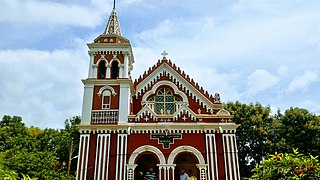
The William Arthur Memorial Church is located on the Bangalore-Honavar Road at Gubbi Town, about 80 km from Bangalore. The church is painted brick red and built in the Gothic style, being completed in 1904. The church is named after William Arthur, an Irish Wesleyan missionary and Canarese scholar, who served in Gubbi. The present structure replacing the old Gobbee Chapel, built by Thomas Hodson. The church is managed by the Church of South India and comes under the Karnataka Central Diocese
Daniel Sanderson was a Wesleyan missionary, who served in India, in the Wesleyan Canarese Mission, at the Bangalore Petah, Mysore, Tumkur and Gubbi, between 1842 and 1867. Sanderson was a linguist and a Kannada scholar. He is credited with co-authoring the first Kannada–English dictionary, published in 1858 by the Wesleyan Mission Press with the financial support by Sir Mark Cubbon. He also translated Lakshmisa's magnum opus, the Jaimini Bharata, into English. On return to England, he was appointed as the director of the Richmond Theological College.
John Garrett was a Wesleyan missionary, who served in India, in the Wesleyan Canarese Mission, at the Bangalore Petah. Garrett was a linguist and a scholar of several languages such as Canarese (Kannada), Sanskrit, Tamil, Persian, German and Latin. Garrett is credited with establishing a printing press, the Wesleyan Mission Press, at Bangalore Petah at around 1841. Garett is also credited with founding the Central High School in 1858, and serving as its first principal, which is now the Central College. Garett also held many designated posts in the Department of Public Instruction, under the Mysore State. His most significant contribution to Kannada literature is said to be the very first translation of the Bhagawat Gita into Kannada in 1846.








